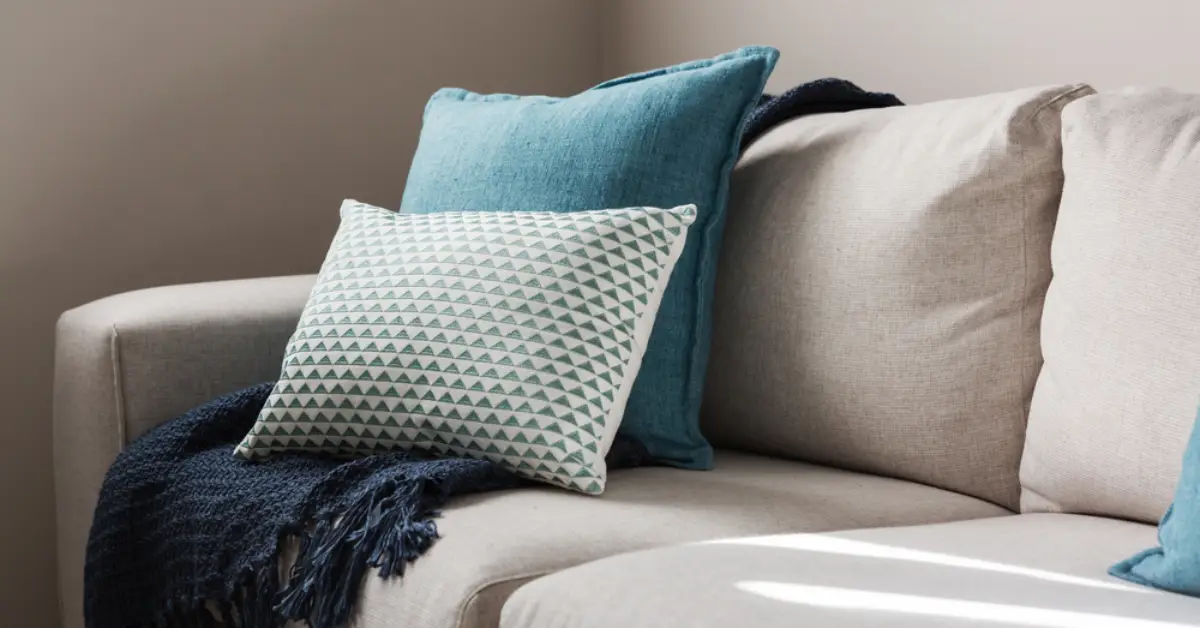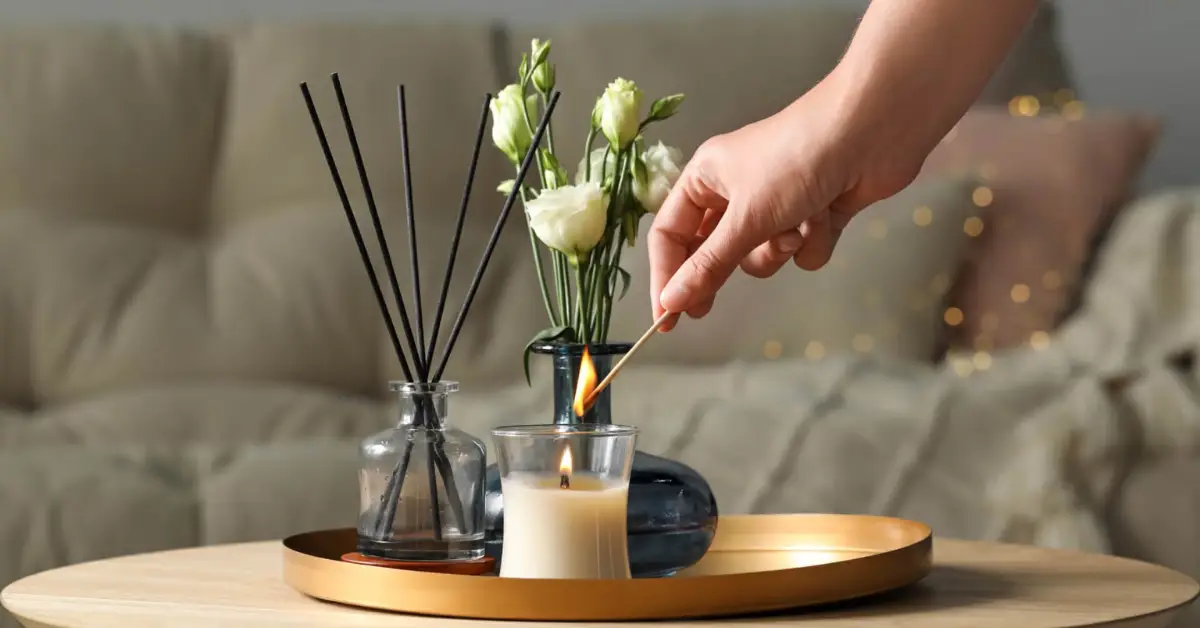5 Everyday Items in Your Home That Might Be Causing Allergies
I used to think I had seasonal allergies. Every spring, my nose would clog up, my eyes would itch, and I’d blame it on the trees outside. But when the same thing happened in the middle of winter—windows shut, air purifier running, house spotless—I realised something didn’t add up.
That’s when it hit me: the problem wasn’t outside. It was inside my own house.
If you’ve ever cleaned every surface, washed your sheets, and still woken up stuffy or tired, you might be dealing with hidden allergens. They don’t just live in the obvious places like dust piles or pet hair. They hide in your couch, your laundry, even the air freshener you spray to make things “smell clean.”
Over time, those invisible irritants can do more than just make you sneeze—they can quietly drain your energy, mess with your sleep, and trigger headaches or asthma. The worst part? Most of us have no idea we’re living with them every single day.
In this guide, I’ll walk you through five everyday household items that might be secretly triggering your allergies—and simple fixes that actually work. My goal isn’t to scare you; it’s to help you breathe easier and make your home feel like the safe space it’s supposed to be.
Before we dive in, think about this: when was the last time you checked what’s really hiding in your sofa cushions or pantry?
How I Picked These 5 Items — My Criteria & Gaps to Fill
When I started digging into what actually triggers allergies at home, I didn’t want to create another list that just says “dust mites, mold, pets.” You’ve probably read that a hundred times already. I wanted to go deeper—into the places and products we overlook every day but still use constantly.
I spent time reviewing allergy resources, including trusted sources like the Asthma and Allergy Foundation of America, and then compared them with what real people complain about in online discussions. That contrast was eye-opening.
Most expert sites talk about “types of allergens,” while homeowners talk about “why my nose runs even after cleaning everything.” The gap between science and daily life is exactly where this article sits.
Here’s how I narrowed down the five items you’ll read about next:
- Ubiquity: They had to be things you already use every single day—so no obscure materials or rare chemicals.
- Surprisingness: I wanted at least one or two that make you stop and say, “Wait, that too?”
- Manageability: You should be able to do something about them without calling in a specialist or spending hundreds of dollars.
As I went through different medical and home-improvement sites, I noticed a common blind spot: most lists mention allergens as general concepts but skip where they hide or how your habits make them worse. For example, they’ll say “watch for dust mites” but not explain that your sofa, not your carpet, might be the bigger culprit.
So in this article, you won’t just see what’s causing your allergies — you’ll understand why those hidden spots matter and what you can realistically do about them.
By the end, my hope is that you’ll walk around your house seeing things a little differently—not with paranoia, but with awareness. Because once you know where the real problems hide, fixing them becomes a whole lot easier.
Hidden Allergen #1 — Soft Furnishings & Upholstered Décor

You might think your living room is spotless after a good vacuum and some fabric spray, but here’s the truth — your sofa, cushions, and curtains are quietly working against you. They’re soft, warm, and full of tiny gaps where dust mites and skin flakes collect over time.
Even if you don’t see visible dust, those fibers trap microscopic particles that thrive in humidity and body warmth. When you sit down, stand up, or even plump your cushions, you’re unknowingly releasing those particles back into the air — and straight into your lungs.
Why Your Sofa, Cushions, and Drapes Harbor Dust-Mite Reservoirs
Dust mites feed on dead skin cells and love cozy, fabric-heavy environments. Upholstered décor gives them the perfect mix of darkness, warmth, and food. Add in fabric treatments, pet dander, and regular use, and you’ve basically got an allergen playground. What most people miss is that couches and curtains are rarely deep-cleaned — and over time, even high-end fabrics turn into allergen traps.
How to Spot High-Risk Fabric Types + Chemical Treatments
Some materials hold onto allergens far more than others. The texture, weave, and chemical finish all play a role in how easily dust and irritants cling.
Watch out for these:
- Velvet, chenille, and wool blends: their deep pile traps particles that a normal vacuum can’t reach.
- Scotchgard or heavily treated fabrics: chemicals can trigger sensitivity in people with fragrance or VOC allergies.
- Heavily dyed or perfumed cushions: dyes and fabric softeners may release compounds that irritate airways.
Instead, choose:
- Smooth, tightly woven cotton or microfiber fabrics — easier to clean and less likely to trap allergens.
- Removable, washable covers — ideally machine washable at hot settings.
Mitigation Checklist
If replacing furniture isn’t realistic, small habits can make a huge difference:
- Use allergen-proof covers for cushions and pillows.
- Vacuum with a HEPA filter and steam clean periodically to kill mites and remove deep-set debris.
- Choose low-nap, washable fabrics whenever possible.
- Rotate or sun-dry cushions every few weeks to reduce moisture buildup and mite activity.
Even 20 minutes of sunlight exposure can cut surface allergens by half — a trick many allergy clinics quietly recommend.
Hidden Allergen #2 — Your Mattress, Pillows & Bedding Layers
Your bed might be the most comfortable place in your home — but it’s also the largest allergen reservoir most people sleep on for eight hours straight. Every night, we shed skin cells, sweat, and oils, which combine with warmth and humidity to feed entire colonies of dust mites.
Why Mattresses & Pillows Are Top Hideouts for Mites
Most cleaning routines stop at washing sheets. But the real problem lies beneath — inside your mattress layers, underpads, and pillow fillings. Foam and fiber trap moisture, and because we rarely expose them to sunlight or heat, they become long-term mite habitats. Over time, these allergens mix with fabric dust and get released each time you roll over or fluff your pillow.
A study from the National Institutes of Health found that mattresses hold the highest concentration of indoor allergens compared to any other household surface — making the bedroom ground zero for allergy symptoms like morning congestion or chronic coughing.
What Materials (Foam, Latex, Synthetic) Can Be Better or Worse
Not all bedding materials are equal when it comes to allergen control:
- Memory foam and latex: resist mite infestation but can off-gas VOCs if low-quality.
- Down or feather pillows: comfortable but notorious for harboring mites and mold spores.
- Hypoallergenic synthetics or tightly woven cotton: offer the best balance of comfort and allergen resistance.
If you love down pillows, use an allergen-proof cover and replace them every two to three years.
Action Steps
Simple changes can dramatically reduce your exposure:
- Encase your mattress, pillows, and toppers in zippered barrier covers.
- Wash all bedding weekly at 130°F (or hot setting) to kill mites and bacteria.
- Replace pillows regularly — ideally every 2–3 years to prevent allergen buildup.
- Air out bedding in sunlight at least once a month to naturally disinfect and dry inner layers.
These small shifts turn your bedroom from an invisible allergen zone into a genuine rest space — one where you wake up feeling clear, not congested. If you’re already working on making your bedroom a cleaner, allergy-free zone, you should also check out 5 Reasons You Should Never Keep Shoes in Your Bedroom — you’ll be surprised how something as simple as shoe storage can quietly affect your indoor air quality.
Hidden Allergen #3 — Household Cleaning Products, Air Fresheners, and Scented Candles

You probably buy cleaning products and air fresheners thinking they’ll make your home smell “fresh” and “clean.” Ironically, many of them do the exact opposite — they fill the air with volatile organic compounds (VOCs), enzymes, and artificial fragrances that can quietly irritate your airways.
How VOCs, Enzymes & Fragrances Trigger Sensitization
Most cleaners, sprays, and candles release VOCs — tiny chemical particles that linger long after the scent fades. These compounds react with indoor air, producing formaldehyde and other irritants that can inflame nasal passages, dry out your throat, and worsen asthma symptoms.
Even “natural” products aren’t always safe; plant-based enzymes can also trigger allergic responses in sensitive people. The more often you spray or burn, the higher the buildup in your home’s air.
Common Culprits (Brands, Ingredient Names) to Avoid
- Air fresheners and plug-ins containing limonene, benzene, or phthalates
- Multi-surface sprays with chlorine, ammonia, or strong synthetic scents
- Scented candles and wax melts made with paraffin wax or added dyes
- Laundry products using “fragrance boosters” or fabric softeners with persistent perfumes
You don’t need to throw out everything, but you do need to start reading labels more critically. “Fresh linen” might smell nice, but that fragrance could be releasing dozens of compounds you can’t see or smell.
Safer Swap Ideas
Small changes can make your indoor air cleaner overnight:
- Switch to fragrance-free, hypoallergenic cleaning lines certified by trusted allergy foundations.
- Try DIY substitutes — vinegar for surface cleaning, baking soda for scrubbing, lemon oil for mild disinfection.
- Practice ventilation awareness: open windows or run exhaust fans during and after cleaning to clear airborne residues.
According to the Environmental Protection Agency, proper ventilation is one of the most effective ways to lower VOC exposure inside homes — yet it’s also the most overlooked.
And while you’re rethinking your cleaning habits, take a look at 10 DIY Methods for Roach-Free Living (No Chemicals Required). It’s packed with safe, chemical-free cleaning ideas that keep your home fresh without adding more allergens into the air.
Hidden Allergen #4 — Indoor Plants & Potting Soil
I love having greenery indoors — it softens a room and purifies air. But here’s the catch: the same soil that keeps plants healthy can also become a hidden allergen source if you don’t maintain it properly.
How Mold, Spores & Damp Soil Act as Allergen Sources
Damp potting soil is the perfect breeding ground for mold spores and mildew. When you water plants or disturb the soil, those spores can go airborne and circulate through the room. You breathe them in without realizing it, and if you’re sensitive, they can trigger congestion, coughing, or even headaches.
It’s not the plant itself — it’s the ecosystem forming inside the pot that becomes the issue, especially in humid or low-light spaces where moisture lingers.
Which Plant Types or Soil Mixes Raise Risk
High-risk combinations include:
- Peace lilies, ferns, and ivy — beautiful, but they prefer damp soil that promotes mold.
- Organic potting mixes with compost or bark chips — rich nutrients for both plants and fungal spores.
- Poor drainage containers where excess water stagnates at the bottom.
Instead, go for plants that tolerate drier soil and good airflow: succulents, air plants, or snake plants are ideal.
Mitigation Plan
A few tweaks can keep your greenery allergen-free:
- Choose low-mold plants such as succulents and air plants.
- Use sterile potting mix with good drainage and avoid overwatering.
- Wash leaves regularly to remove dust and pollen buildup.
- Replace the top inch of soil every few months and keep plants out of bedrooms if you’re sensitive.
Think of it as creating balance — enjoy your plants, but manage their environment the way you manage your own. If you share your home with pets, it’s worth reading 8 Home Hazards Every Parent Should Check for When You Have Pets. It highlights common environmental triggers — including plant-related risks — that can affect both your pets and your family’s health.
Hidden Allergen #5 — Kitchen & Food Storage Zones (Flours, Spices, Pantry)

Your kitchen might seem like the cleanest room in the house, but it can also be the most deceptive. Behind closed jars and sealed packets, tiny mites and molds can thrive on dry ingredients like flour and spices — even when you store them neatly.
The Lesser-Known “Oral Mite Anaphylaxis” Concept & How Stored Flour Becomes Allergenic
Here’s something most people have never heard of: Oral mite anaphylaxis. It’s a rare but real allergic reaction caused by eating foods made from mite-contaminated flour or grains.
When flour is stored for months in warm, humid conditions, mites multiply invisibly. Once cooked or baked, their proteins can still trigger allergic reactions ranging from itching to severe respiratory symptoms. This is an area even many allergy guides gloss over, yet it can be a major hidden trigger.
How Spice Containers, Grains & Opened Packets Attract Mites, Moths, and Humidity
Kitchen cupboards hold everything allergens love: darkness, warmth, and crumbs. Unsealed spice jars, open rice bags, or flour left in paper packaging can all collect moisture and invite mites or pantry moths. Even “sealed” containers can trap humidity if not airtight.
Signs to watch for:
- Small clumps in flour or spices
- Fine webbing around jar lids (a sign of mites)
- A slightly sweet or musty odor in old grains
Preventive Habits
Keeping your pantry allergen-free doesn’t require fancy systems — just consistency:
- Use airtight glass or metal containers instead of plastic bags.
- Store items in cooler, low-humidity spots, not near the oven or dishwasher.
- Rotate and clean pantry shelves every few months.
- Freeze new flours for 24 hours before use to kill any potential mites.
By making these simple changes, you can stop allergens at their source — before they ever reach your plate.
When These Measures Aren’t Enough — Possible Exceptions & Escalation
Sometimes, no matter how carefully you clean or how many changes you make, your allergies don’t fully calm down. That’s not your fault — it just means your triggers might run deeper than surface allergens.
If you’ve done all the basics and still wake up congested or sneeze every morning, it’s time to look at the next level of solutions:
- Allergy testing or immunotherapy: When DIY fixes aren’t enough, a certified allergist can pinpoint your exact triggers through skin or blood tests. Knowing which allergen is at fault — dust, mold, pet dander, or something else — makes your plan far more targeted. Immunotherapy (like allergy shots or sublingual drops) can then help retrain your immune system to respond less aggressively over time.
- Structural mold problems: Sometimes mold hides behind the drywall or under flooring after leaks. If your symptoms spike in specific rooms, or if there’s a persistent musty smell, you may need professional remediation rather than surface cleaning.
- Pet-related sensitivities: Even if you love your pets, their dander can linger on carpets, furniture, and clothes. Using HEPA vacuums, keeping pets out of bedrooms, and grooming regularly can help — but in severe cases, you might need to consult an allergist for long-term management.
- Climate and humidity factors: If you live in a tropical or coastal area, moisture and mites multiply faster. Investing in a dehumidifier and regularly maintaining ventilation systems can make a major difference in how your body reacts indoors.
Think of this stage as calling in reinforcements — not giving up. Professional insight, environmental testing, or medical desensitization can finally close the loop on what home efforts alone can’t fix.
Cost–Time–Effort Snapshot
If you’re wondering where to start, here’s a quick comparison chart to help you decide which upgrades deliver the biggest relief for your effort and budget.
| Allergen Item | Cost (low–mid) | Time / Effort | Allergen Reduction Impact |
|---|---|---|---|
| Bedding covers | $40–$120 (once) | Low (once) | High |
| Replacing upholstery | $600–$2,000 | High | Medium–High |
| Switching to fragrance-free cleaning | $10–$50/month | Medium | Medium |
| Plant soil overhaul | $15–$40 | Medium | Low–Medium |
| Pantry overhaul | $30–$80 | Low | Medium |
This list isn’t about perfection — it’s about priority. If you can only start with one change, go for the bedding covers. They deliver the biggest return in comfort and allergy control.
Advanced Tips & Pro Upgrades

If you’re the kind of person who loves fine-tuning every detail, these advanced strategies can push your indoor air quality to near-clinic levels:
- Use indoor VOC or allergen sensors: Compact air monitors now measure chemical levels and particulate matter in real time, letting you identify exactly which activities spike your home’s air pollution.
- Upgrade to HEPA + activated-carbon air purifiers: Choose models rated for your room size and, if possible, with UV filtration for killing airborne mold spores. Position them where you spend the most time — bedrooms, living rooms, or home offices.
- Install smart ventilation controls: Automated exhaust fans and humidity sensors prevent excess moisture, one of the most common allergy triggers in humid regions.
- Schedule professional HVAC and duct cleaning: Dust, dander, and mold can accumulate inside vents where you can’t reach them. A certified cleaning every year or two can dramatically improve airflow and reduce hidden allergens.
When you treat your home like a living system — one that needs clean air, balanced moisture, and proper circulation — your body notices the difference. Each layer of prevention builds on the last until the environment itself starts supporting your health instead of working against it.
Key Takeaways & First 3 Actions You Can Do Tonight
Let’s bring it all together. The biggest takeaway here isn’t that your home is full of allergens — it’s that you can fix most of them yourself with small, consistent steps.
Here’s what we learned about the five hidden household triggers:
- Soft furnishings like couches and curtains trap dust and dander that your vacuum rarely reaches.
- Mattresses and pillows are the number one hiding place for mites — even in clean homes.
- Cleaning sprays and scented products often make your air dirtier, not cleaner.
- Indoor plants and damp soil can quietly breed mold and release spores.
- Kitchen flours and spices may host mites if stored too long or in humid conditions.
If you’re serious about breathing easier, start tonight with three quick wins:
- Buy an allergen-proof pillow or mattress cover. It’s a small change that pays off almost immediately.
- Swap one scented cleaner for a fragrance-free or vinegar-based alternative.
- Check your pantry — seal your flours and spices in airtight containers to stop mites before they start.
Then, give it 30 days. Track how you feel — fewer headaches, less congestion, better sleep — and you’ll know exactly which changes made the biggest difference.
Your home should make you feel safe, not stuffy. Start simple, stay consistent, and you’ll feel the shift faster than you think.
What’s the one spot in your home you suspect might be hiding allergens? Share your thoughts in the comments — I’d love to hear what you discover.
For more practical, real-world home improvement and wellness tips, visit Build Like New — where small changes lead to healthier, better homes.
Disclaimer: This article is for informational purposes only and should not replace professional medical advice. If your allergy symptoms persist or worsen, consult a qualified healthcare provider or allergist for personalized diagnosis and treatment.


